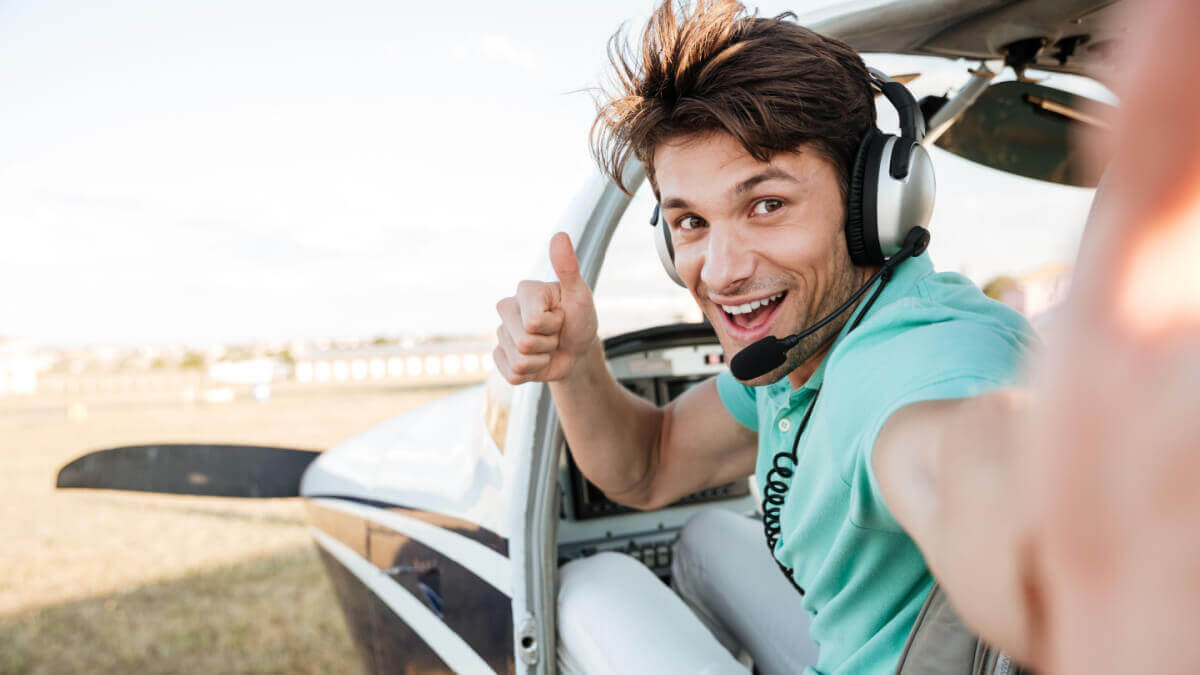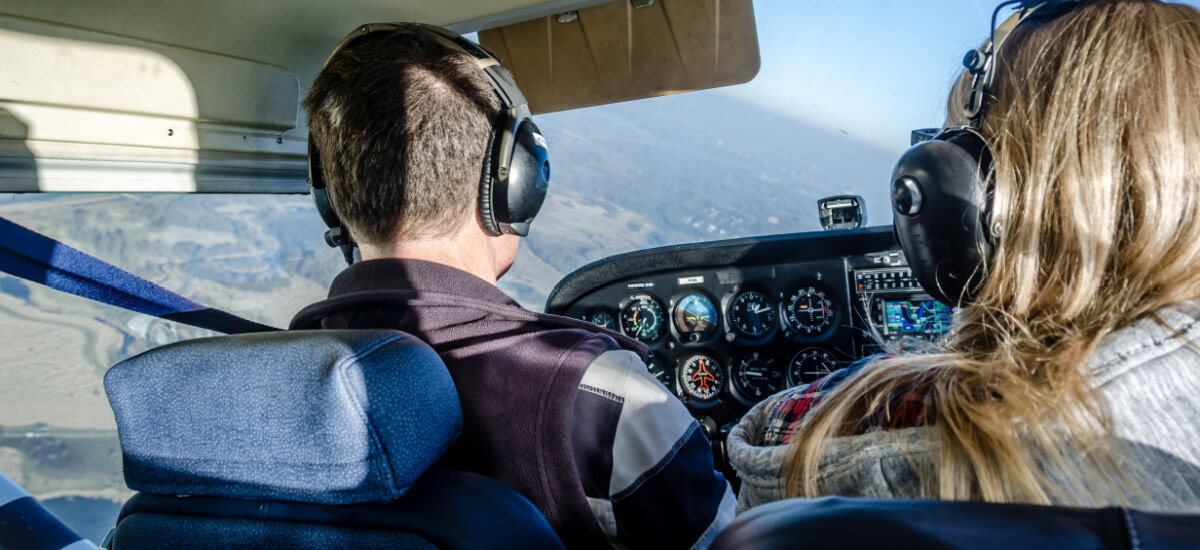SIPP for non-UK residents: Complete guide
Read our helpful guide to SIPPs for non-UK residents, covering everything you need to know about Self-Invested Personal Pensions for UK expats.

Ready to reach new heights in life, literally? Becoming a pilot can be an exciting hobby and a great skill to have under your belt. It’s also a good way to push your boundaries and inspire those around you.
Being a pilot doesn’t have to be just a childhood dream. If you love seeing the world from above, this guide will help you through the process of getting a private pilot’s licence. We’ll inform you on the necessary requirements and total costs.
| Table of contents |
|---|
There are various pilot licence types you can choose from based on your preferences and needs. Each one has specific requirements and limitations, so we advise checking for the most up-to-date information before making your decision.
The Private Pilot licence or PPL allows you to fly non-commercial aircrafts. However, the PPL is also great for those who might want a career in aviation in the future, since it can be upgraded to a Commercial Pilot licence.
PPL holders can add different ratings to their licence, such as those for night flying, operating larger aircrafts or flying in conditions of limited visibility. Since Brexit, this licence is only valid within the UK borders. If you wish to fly across Europe, you can upgrade it to a Part-FCL licence.
The Light Aircraft Pilot licence or LAPL is a good option for those who plan on flying for fun from time to time. It’s easier to get and its limitations won’t be a problem for an occasional aviator.
The LAPL allows you to fly in nice weather only and with up to 3 passengers on board. It can be used for operating single engine aircrafts.
Since Brexit, it can only be used in the UK airspace.³ However, with a special permission, you can fly above France with your LAPL.⁴
You only need to complete 30 hours of training instead of the 45 needed for a PPL. Even the LAPL medical is less strict than the PPL one, so this licence has many advantages.
The National Private Pilot licence or NPPL can only be used in the UK airspace and on aircrafts registered in the UK. Since Brexit, it has become practically identical to the LAPL.
It requires the least training time out of these licences at only 25 hours. On the other hand, it’s limited to certain weather and visibility conditions. If you wish to fly for recreational purposes only, this might be the licence for you.
Obtaining a private pilot’s licence is not as easy as getting a regular driving licence. There are some specific requirements you must meet, along with multiple theoretical and practical tests.
Let’s begin with who can become a pilot in the first place. The main pilot licence requirements are linked to your age and health. You must be at least 17 years old and you must hold a Part MED Class 2 Medical Certificate. This examination is mainly focused on your eyesight, but also your ECG, hearing and medical history in general.⁶
Now let’s move on to the necessary qualifications to be a pilot in the UK. Every licence holder goes through the same process, which consists of theoretical and practical exams.
You must pass 9 theoretical exams. There are no formal educational requirements you must meet in order to get your licence. However, you should have some basic knowledge on these subjects in order to understand what you’re learning.
These are the exams you’ll be taking:
These are all multiple choice exams and you must complete all of them in 2 months. Along with this, you’ll also do a Radiotelephony Practical Examination, which is a step towards getting a Radiotelephony Operator's licence. This licence is important for communicating with Air Traffic Control.
The practical part of the training is the 45 hours you must spend flying. At least 25 hours must be dual flying with an instructor and 10 hours solo flying, but under supervision. The solo flying must include a cross-country flight of at least 150 nautical miles, with full stop landings at two different aerodromes.
After completing the full training, you’ll be asked to take a Skills Test. You’ll be asked to demonstrate everything you’ve learned during the course.⁷

Now that we’ve told you everything you need to do to get a private pilot’s licence, here’s a summary. This is what you should do:
There’s a required number of flying hours for each type of licence. However, this doesn’t mean you’ll get it right after completing them. This depends on different factors such as weather conditions and also your availability.
For example, the PPL requires you to complete at least 45 flight hours. Students can finish this in anywhere from a couple of weeks to a couple of years. The national average is around 60 hours of training.⁸
When choosing a school, it’s important to go for one that’s accredited by the CAA. If you’re having trouble picking, we’re here to help. Here are some of the best flight schools in the UK:
Your private pilot licence cost will depend on a few factors. It can differ from school to school and it depends on the number of hours you spend in the air during your training. On average, it’s anywhere between £10,000 and £15,000 in total. These prices can change, so make sure you ask the schools directly.
Flight schools often offer PPL packages that include all expenses, but in others you have to pay for some things separately. For example, your Radiotelephony Operator’s licence, Class 2 Medical certificate or school membership fees.
Getting a pilot’s licence can be quite expensive and unattainable for some people. Luckily, there are some pilot licence scholarships you can apply for. Some of them cover all expenses, while others are partial.
The Honourable Company of Air Pilots offers full private pilot licence scholarships. Applications start in November and the training is done over the summer. This way, you can avoid bad weather and potentially become a pilot during your vacation days.¹⁰
Alternatively, the ACS Flight Training have their annual Flight Instructor Sponsorship Program. This is a partial scholarship and it covers 10 hours of flight training to aspiring aviators. They are also giving a 12-month membership in their school.¹¹
And there you have it – everything you need to know to get started on your journey of becoming an aviator. Take care to pick the right licence type for your aspiration in the sky, plan your budget, and pass your exams with flying colours.
And, if you ever find yourself flying or travelling outside the UK and need to spend in currency other than the British pound, check out the Wise account from the money services provider Wise. It’s not a bank account but offers many similar features. And it’s perfect for spending.
You can manage your money in 40+ currencies and make international payments for low, transparent fees* and mid-market exchange rates. You can also get a Wise debit card and spend in 160+ countries like a local – with no foreign transaction fees, and only a tiny, upfront currency conversion fee.
Sources used for this article:
Sources last checked on: 07-Dec-2023
*Please see terms of use and product availability for your region or visit Wise fees and pricing for the most up to date pricing and fee information.
This publication is provided for general information purposes and does not constitute legal, tax or other professional advice from Wise Payments Limited or its subsidiaries and its affiliates, and it is not intended as a substitute for obtaining advice from a financial advisor or any other professional.
We make no representations, warranties or guarantees, whether expressed or implied, that the content in the publication is accurate, complete or up to date.

Read our helpful guide to SIPPs for non-UK residents, covering everything you need to know about Self-Invested Personal Pensions for UK expats.

Learn how to cancel your DAZN subscription with our step-by-step guide and discover how Wise can help you save on cross currency subscriptions.

Tired of Disney Plus? Cancel your subscription in minutes with this step-by-step guide and learn how Wise can help with future payments.

Looking to streamline your subscriptions and quit Spotify and cancel your subscription? Follow our guide to avoid unwanted charges on your account.

Read our helpful guide on inheritance tax for UK non-residents, including how IHT works, current tax rates and whether non-residents have to pay it.

How much money can you receive as a gift from overseas in the UK? Read our guide and find out the latest rules.